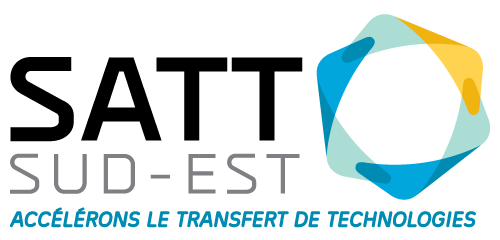La loi PACTE relative à la croissance et à la transformation des entreprises facilite la valorisation de la recherche publique.

Nous vous proposons une série d’interviews répartie en trois épisodes qui vous présentera les principales nouveautés en termes de législation et d’innovation. Lors de ce premier épisode, Audrey GARCIA-COUSTEAU, Juriste à la SATT Sud-Est se prête au jeu des questions – réponses.
Au menu de l’épisode 1 : valorisation et copropriété publique des résultats de la recherche, quelles avancées ?
La Loi PACTE relative à la croissance et à la transformation des entreprises comporte des mesures qui intéressent l’innovation et contient des dispositions visant à simplifier et à faciliter la valorisation de la recherche publique.
Audrey, peux-tu nous expliquer quel est le rôle du mandataire unique dans la valorisation des résultats de la recherche ?
Pour mieux comprendre le rôle du mandataire unique, rappelons d’abord que l’organisation de la recherche française repose sur des unités de recherche multi-tutelles. Si cette organisation favorise l’interdisciplinarité, elle peut conduire à des situations complexes de copropriété impliquant un partage de la propriété intellectuelle sur des résultats issus de la recherche publique entre plusieurs établissements. Or les mesures de protection d’un résultat valorisable doivent être prises rapidement.
Ainsi, la loi a inscrit l’obligation à l’égard des établissements publics de désigner, pour chaque unité de recherche, un mandataire unique qui se voit confier la gestion, l’exploitation et la négociation des inventions brevetables lorsqu’il y a « copropriété publique » sur les titres de propriété industrielle. Le mandataire unique reçoit mandat pour réaliser ces missions : il est l’interlocuteur unique chargé de la valorisation des résultats avec les entreprises intéressées.
Dans l’objectif de favoriser et d’accélérer ce transfert des résultats vers les entreprises, un nouveau décret complète les dispositions de l’article L. 533-1 du code de la recherche issues de la loi PACTE pour notamment renforcer, préciser et élargir le dispositif du mandat.
Quels sont les principaux apports du décret ?
Ce texte réglementaire vient préciser les modalités de gestion et de valorisation des résultats issus de recherche publiques par le mandataire unique. Le décret énonce d’abord de nouvelles modalités destinées à faciliter la désignation du mandataire unique et réduit le délai pour procéder à cette désignation à un mois à compter de la création administrative ou du renouvellement de l’unité de recherche.
Le champ des pouvoirs pouvant être attribués au mandataire unique est élargi. Le décret liste ainsi les actes nécessaires à la protection juridique des résultats, tels que par exemple, les formalités qui jalonnent la vie des titres de propriété intellectuelle et les actes relatifs à la défense des droits sur les résultats afin de constater ou contester un acte de contrefaçon. S’agissant des actes de valorisation pouvant être accomplis par le mandataire unique, ils s’étendent de la négociation à la signature des accords de confidentialité, des accords de copropriété et des contrats de licence d’exploitation. Il peut dorénavant réaliser les actes de cession ou d’abandon de demande de brevet, ce qui était auparavant expressément exclu de ses pouvoirs.
Le texte prévoit des règles de gestion de la copropriété qui s’imposent à défaut d’accord entre les personnes publiques copropriétaires de résultats afin de ne pas bloquer l’exploitation des résultats en question.
Ces dispositions visent à introduire plus de simplicité dans la gestion et l’exploitation des résultats de la recherche publique par le mandataire unique pour faciliter leur transfert vers le monde socio-économique.
Notre experte, Audrey GARCIA-COUSTEAU, Juriste en Droit des affaires & Licensing à la SATT Sud-Est, diplômée d’un Master en Droit des affaires, spécialisé en Droit de la Propriété Industrielle et d’un Master en Droit des affaires et Management, répond aux questions concernant le mandataire unique.
Ce décret introduit-il des changements majeurs sur l’activité du mandataire unique ?
Le décret propose un dispositif cadré permettant aux copropriétaires de confier via le mandat d’importantes prérogatives au mandataire unique. Les conséquences directes sur son activité viennent de l’introduction de nouveaux délais qu’il doit respecter dans le cadre de ses obligations envers les copropriétaires et notamment :
- Le délai de 2 mois à compter de la réception d’une déclaration d’invention pour informer des décisions de protection et de valorisation,
- Le délai de 4 mois avant toute décision d’abandon d’un titre de propriété .
Par exemple, dès la réception par la SATT Sud-Est d’une déclaration d’invention, l’équipe en charge du projet analyse le potentiel des résultats en vue de la présentation du projet devant le Comité de Propriété Intellectuelle (CPI), organe décisionnel de la SATT Sud-Est. Ce dernier rend son avis sur la stratégie à adopter vis-à-vis du projet dans les deux mois imposés par le décret. A l’issue du CPI, la SATT Sud-Est communique alors la décision aux copropriétaires, conformément aux dispositions prévues dans le décret.
A suivre, épisode 2 – Loi PACTE et Innovation : retour sur les dispositions relatives aux chercheurs-entrepreneurs
Pour aller plus loin
- Découvrez la Loi n° 2019-486 du 22 mai 2019 (JO 23 mai) relative à la croissance et la transformation des entreprises, dite « loi PACTE »
- Consultez l’article L. 533-1 du code de la recherche
- Prenez connaissance du Décret n°2020-24 du 13 janvier 2020 relatif à la gestion de la copropriété des résultats de recherche, au mode de désignation et aux missions du mandataire unique
- Photo copyright ©Fauxels
@SATTse_ #LoiPacte #Startup #PropriétéIntellectuelle #MandataireUnique #Décret #Légifrance #Innovation




